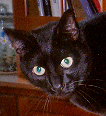June 7: Phnom Penh
Got up early this morning -- part of a trend I wish to establish again -- and headed off with a tuk tuk driver on a grim genocide tour.
Fifteen kilometers south of town lie the Killing Fields of Choeung Ek, where, between 1975 and 1978, more than 17,000 men, women and children were murdered by the Khmer Rouge. The remains of 8,985 people were exhumed from mass graves in 1980; the remaining bodies have been left untouched.
The Khmer Rouge went to great lengths to keep their mass killings secret, my tour guide told me, from using quiet methods of killing -- smashing in heads, for example, or sawing heads off with the heavy, sharp edge of a palm tree -- to playing patriotic music over a loudspeaker "to hide the sounds of the moans."
Despite the efforts to keep the killing secret, my guide explained that the killing fields -- like others across Cambodia -- were easy to find. "After the Khmer Rouge, we knew where to find the bodies," he said, "because of the smell."
Prisoners were shackled, 30 at a time, to a long, steel bar and led to their graves, where they were killed. Even today, thirty years after the killing began, the prisoners' clothes, and their bones, work their way to the surface whenever it rains. Keep your eyes peeled, or you're likely to step on someone's shirt. Just as easily, you could be walking on their femur.
More than 8,000 skulls of the victims have been arranged behind glass in the Memorial Stupa.
Before being shipped to the Killing Fields, prisoners were kept and tortured at a Phnom Penh high school, renamed by Pol Pot's forces as Security Prison 21, or S-21. The Khmer Rouge kept thorough records of their prisoners: each was photographed, and a complete biography taken down upon arrival. Many of these photos are today on display at the school, which is now a museum. Many former classrooms in Building A depict the instruments of torture used by the Khmer Rouge, from metal chains to car batteries. Photos in the rooms, and throughout the museum, don't shy away from showing the violence visited upon the prisoners.
Building B houses an exhibit of photos, while Building C is much as it was left in 1979, with brick cells on one floor, wooden cells on the second, and "mass detention" cells on the third. A thick web of barbed wire remains over the front of Building C today, a sign stating that it was used to keep inmates from killing themselves. Building D holds more photos of the victims, as well as photos of a nearly abandoned Phnom Penh during the late 1970s. Coupled with the Killing Fields, visiting S-21 was thoroughly depressing, especially knowing that in other parts of the world, genocide continues today. It's a cliche, but all day I kept wondering how man can be so cruel to his fellow man.
While several of those who ran S-21 are awaiting an international war crimes trial, those who did the killing are largely free men today, my guide explained. "In 1979, they just disappeared. We know that most of those who worked in the killing fields are in their late 40s and they can't read or write," he said. "We believe most of them are farmers."






No comments:
Post a Comment